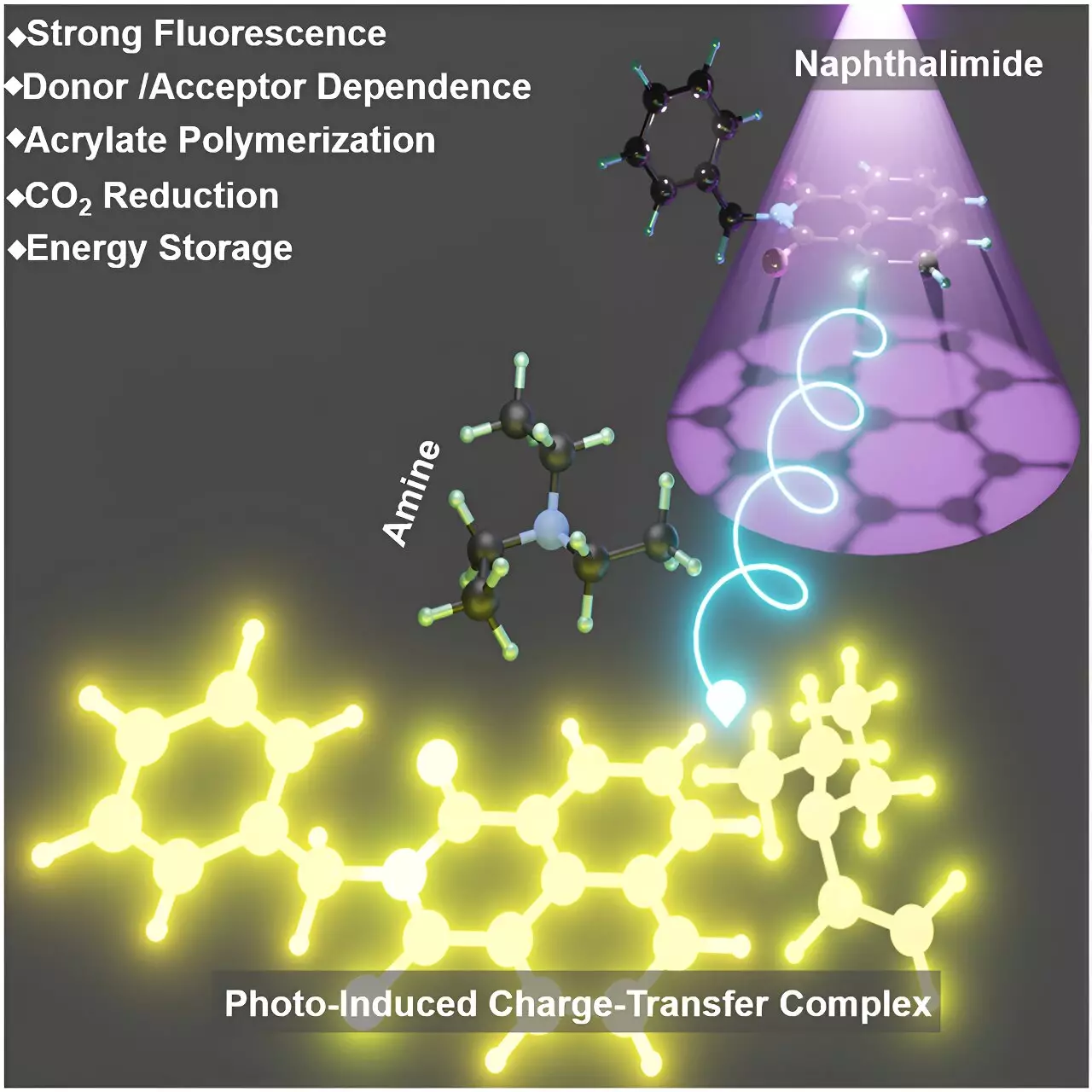Charge transfer between molecules is a crucial process that impacts various natural and synthetic systems. It plays a fundamental role in processes such as photosynthesis, respiration, and organic synthesis. Despite extensive research in the field, creating stable and light-responsive charge-transfer complexes in artificial systems has been a persistent challenge.
Recently, a research team led by Prof. Zhang Guoqing from the University of Science and Technology of China (USTC) has made a groundbreaking discovery. They identified a highly reactive photo-induced charge-transfer complex (PCTC) between amine and imide. This discovery offers new insights into complex photochemical processes and addresses the existing challenges in creating stable charge-transfer complexes.
The researchers found that aromatic imides and alkyl amines, which did not interact significantly in their ground state, formed stable PCTCs when exposed to UV light. The resulting complex exhibited high fluorescence and resembled a Meisenheimer complex. Through the use of various spectroscopic techniques such as high-resolution mass spectrometry and time-resolved spectroscopy, the formation and stability of these complexes were confirmed.
By conducting a series of experiments, the researchers were able to explore the formation mechanism of the PCTCs. They observed that the interaction between naphthalimide and triethylamine under UV light led to the formation of the complex, as evidenced by distinct absorption bands and enhanced fluorescence. Furthermore, the researchers demonstrated the practical applications of PCTCs by using them to initiate the polymerization of acrylic esters under UV light. This showcased the potential of PCTCs in creating new polymeric materials with unique properties.
The discovery of highly reactive PCTCs between amines and imides under UV light not only enhances our understanding of photo-induced charge-transfer processes but also opens up new avenues for practical applications. These applications include polymer science, environmental technology, and energy storage. The ability of PCTCs to store UV energy and release it in the dark also showcases their potential to enable processes that traditionally rely on continuous light exposure to proceed without interruption.
The discovery of PCTCs represents a significant step forward in the field of photo-induced charge-transfer complexes. It not only sheds light on previously unexplored processes but also paves the way for innovative applications in various fields. This research highlights the importance of continued exploration and experimentation in unlocking the full potential of charge-transfer complexes.


Leave a Reply